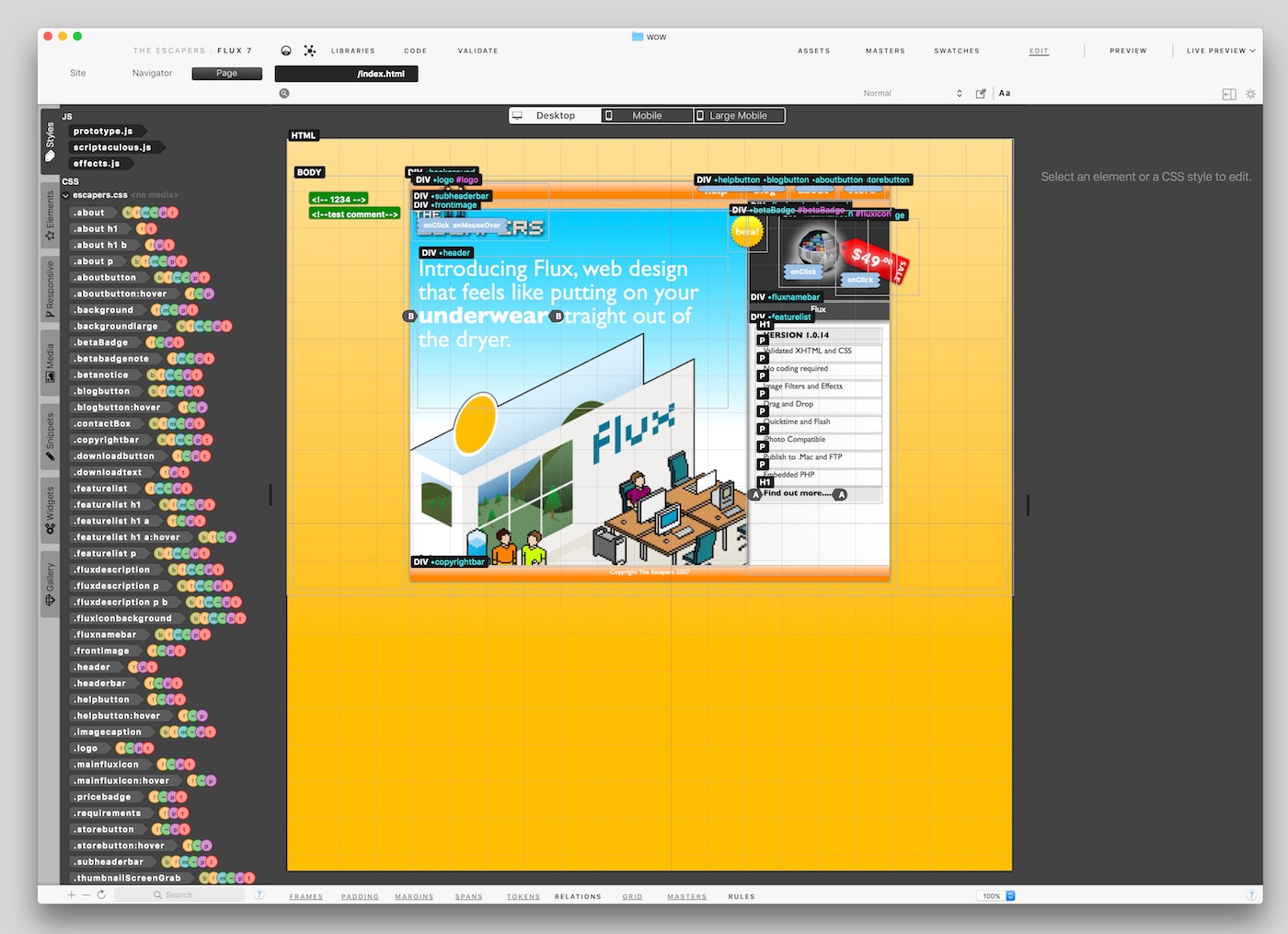Flux 7 0 3 – Advanced Web Design Tool
The NetBeans IDE incorporates many features for visual web application design, a number of which have been available as part of the NetBeans IDE Visual Web Pack 5.5 module. NetBeans 6.0 integrates these visual design features directly into the IDE and adds more features to the mix. This article gives you a quick overview of the feature.
Flux 7 0 3 – Advanced Web Design Tool Download
- Check out the actual Webflow project here to see how it was built: how to design high-value websites: https://f.
- To help you find what you’re looking for, we’ve put together a list of the 15 best web design software tools for building websites, graphic design, interface design, and prototyping. Use the links below to jump to a section that interest you the most.
- Flux 6 0 13 – Advanced Web Design Tool Software Flux 6 0 13 – Advanced Web Design Tools TL;DR: As of Aug. 27, you can take half off a lifetime subscription to the Flux 7 Web Design Tool — dropping the price to just $49.
Designing a blueprint requires special training, but coming up with an initial floor plan does not. Impresa Modular’s preferred Interactive Design Software – Project Homestyler, is available to you Absolutely Free so you can easily and quickly develop your own custom modular home plan.
If you know how many rooms you want and what size you want them to be and what style you want your home to be in, you can design your own custom modular home plans. As always, if you have any questions, you can access our years of modular home design experience by contacting a Modular Home Consultant at Impresa Modular.
Don’t worry about getting every detail just right at this point. The goal is to get your plan to the stage that it fairly represents your needs and wants. Once you have reviewed your custom modular home plan with your family, friends, etc. we are ready to get started moving your custom home to the next stage – The Initial Estimate.
Interactive Editor
Use a state-of-the-art floorplan editor to build your dream home.
Open Floorplan EditorThe interactive design software, Homestyler, is web-based, if you can access the internet and use Internet Explorer 7 (or higher) or Firefox 3.0 (or higher); and Adobe Flash Play 9.0 (or higher), you can use Homestyler. It’s that simple!If you have any experience with Internet software and a desire to design your new home you are well on your way to mastering this intuitive design software absolutely free! Don’t forget to sign-up for a Login ID and password when you first access the software. This will allow you to save and share your custom modular home plans.
Homestyler – Camera FOV Adjustment
- This video demonstrates how to change the point of view of your camera and look around the design you have created.
Homestyler – Paint with Multiple Textures

- This video provides an overview of the options to change the colors of the wall and change all the textures within the design created.
Homestyler – Rotate Floor Pattern
- This video demonstrates how to change the patterns on the floor and rotate them to give them a different aspect.
Tip 1
Flux 7 0 3 – Advanced Web Design Tools
A modular home, as the name implies, is constructed by assembling a group of modules to create the finished home structure. Each of these modules is individually transported to your site. Modules are typically built in widths of approximately 10′, 12′, 14′, and 16′. When designing a modular home it is more cost effective (but not a limit) to make the width of your overall home a multiple of standard widths (i.e. 28′, 32′, etc).
Tip 2
As with any residential construction method, a large variety of complex roof lines add to the overall expense of the construction for your home. While it is important to design a home you will be proud to live in, don’t underestimate the positive impact on your home budget of simplified roof lines.
Tip 3
Don’t feel constrained by placement of bathrooms. Plumbing is relatively cheap. Don’t let your concern for plumbing costs impact your plan. Design it for your lifestyle first!
Tip 4

Open space is important. Modular homes allow for vaulted ceilings, cathedral ceilings, and even 9′ high ceilings. Open spaces on marriage walls (the structural joint where modules meet) have typical engineering restrictions. It is usually possible to have 19′ to 24′ clear openings on structural walls. If you want larger openings it is usually possible to insert a small support with a decorative covering to make it appear as an intended part of the design.
Tip 5
In all home design, keep track of the exterior appearance and location of windows and doors as well as the interior appearance. There are building code requirements that determine the minimum size and opening areas for windows. If you have any specific concerns about this don’t hesitate to contact us.
Tip 6
The size of the rooms of your home ultimately depends on you and your lifestyle requirements. Here are some basic area guidelines for homes that you can follow:
- Dining Room: Between 125-200 sq.ft
- Living Room: 175-330 sq.ft
- Master Bedroom: 145-300 sq.ft
- Bathroom: 40-80 sq.ft
- Kitchen: 135-300 sq.ft
Tip 7
You can always call Impresa Modular to help you with any questions or to learn more about modular home design.